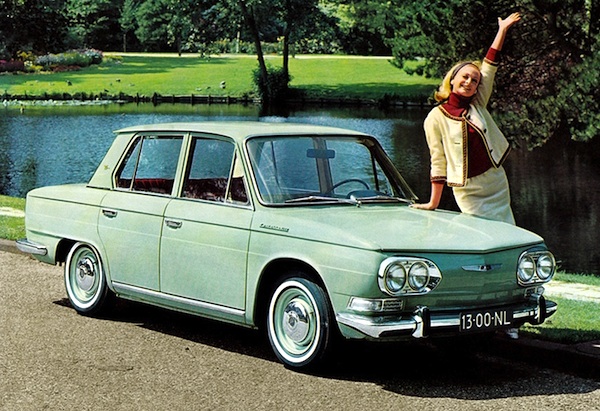Log in
Search
Latest topics
» Roger Harris revisitedby rsv1cox Today at 3:38 pm
» My N-1R build log
by GallopingGhostler Today at 3:04 pm
» Tee Dee .020 combat model
by 1/2A Nut Today at 2:43 pm
» Chocolate chip cookie dough.........
by roddie Today at 1:13 pm
» Purchased the last of any bult engines from Ken Enya
by sosam117 Today at 11:32 am
» Free Flight Radio Assist
by rdw777 Today at 9:24 am
» My latest doodle...
by batjac Yesterday at 9:47 pm
» Funny what you find when you go looking
by rsv1cox Wed Nov 20, 2024 3:21 pm
» Landing-gear tips
by 1975 control line guy Wed Nov 20, 2024 8:17 am
» Cox NaBOO - Just in time for Halloween
by rsv1cox Tue Nov 19, 2024 6:35 pm
» Canada Post strike - We are still shipping :)
by Cox International Tue Nov 19, 2024 12:01 pm
» Duende V model from RC Model magazine 1983.
by getback Tue Nov 19, 2024 6:08 am
Cox Engine of The Month
Cox Queen Bee .09
Page 1 of 1
 Cox Queen Bee .09
Cox Queen Bee .09
Everyone knows the Queen Bee is heavy and anemic for an engine this size. I had a spare Medallion .09 piston/cylinder set sitting around. There is no substitute for displacement.
The cylinder fits the Queen Bee crankcase. The problem is the crank pin on the Queen Bee is .133" and the .09 is .155".
I turned a brass bushing to fit the crankpin and now the fit is nice with the .09 piston on the .074 crank pin. There is a slight difference in the stroke between the .074 and the .09. I used a TD .09 head to make up for this. It has nice compression and should run.

Maybe I will run it tomorrow and tach it with a 7x3.5 prop and see what it does.
Looks the same on the outside except this cylinder doesn't have the top fin milled.

The cylinder fits the Queen Bee crankcase. The problem is the crank pin on the Queen Bee is .133" and the .09 is .155".
I turned a brass bushing to fit the crankpin and now the fit is nice with the .09 piston on the .074 crank pin. There is a slight difference in the stroke between the .074 and the .09. I used a TD .09 head to make up for this. It has nice compression and should run.

Maybe I will run it tomorrow and tach it with a 7x3.5 prop and see what it does.
Looks the same on the outside except this cylinder doesn't have the top fin milled.


Jason_WI- Top Poster


Posts : 3123
Join date : 2011-10-09
Age : 49
Location : Neenah, WI
 Re: Cox Queen Bee .09
Re: Cox Queen Bee .09
I would be interested in seeing the performance difference. Do you have another stock queen bee to compare with? I probably know the answer to that question... 

Cribbs74- Moderator



Posts : 11907
Join date : 2011-10-24
Age : 50
Location : Tuttle, OK
 Re: Cox Queen Bee .09
Re: Cox Queen Bee .09
Yes I do but it's NIB. I can change it back to use the .074 piston/cylinder for comparison.

Jason_WI- Top Poster


Posts : 3123
Join date : 2011-10-09
Age : 49
Location : Neenah, WI
 Re: Cox Queen Bee .09
Re: Cox Queen Bee .09
I was going to do that with a tee dee .09 cylinder but didn't have a way around the conrod fit. You can also use a sportsman/Olympic spring starter on those, fits the muffler sleeve perfectly.
Jim
Jim

JPvelo- Diamond Member

- Posts : 1972
Join date : 2011-12-02
Age : 57
Location : Colorado
 Re: Cox Queen Bee .09
Re: Cox Queen Bee .09
Jason,
A few machining questions if you don't mind.
what tools did you use to make the bushing? I.e. Did you make a ream, tiny boring bit or is a numbered drill bit sufficient?
Is the bushing a press fit in the rod?
Thanks,
Mike
A few machining questions if you don't mind.
what tools did you use to make the bushing? I.e. Did you make a ream, tiny boring bit or is a numbered drill bit sufficient?
Is the bushing a press fit in the rod?
Thanks,
Mike

Cryhavoc- Bronze Member

- Posts : 58
Join date : 2013-10-29
Age : 58
Location : Copperas Cove, Texas
 Re: Cox Queen Bee .09
Re: Cox Queen Bee .09
I love this!
Will definitely have to build one.
I would like to know what type brass you used.
Will definitely have to build one.
I would like to know what type brass you used.

iamplanecrazy2- Silver Member

- Posts : 92
Join date : 2011-07-03
Location : Waxahachie Texas
 Re: Cox Queen Bee .09
Re: Cox Queen Bee .09
Not sure what the brass is as far as type. I just used something I had. This is just a test platform to see how it performs. If it would ever warm up I will test run it to see what type of performance it has. If it performs well I will definately use a brass rated for use as a bushing.

Jason_WI- Top Poster


Posts : 3123
Join date : 2011-10-09
Age : 49
Location : Neenah, WI
 Re: Cox Queen Bee .09
Re: Cox Queen Bee .09
I'm not an expert by any means but the metal I recall most often associated with rod bushings is bronze.
Would that be better than brass?
Would that be better than brass?

iamplanecrazy2- Silver Member

- Posts : 92
Join date : 2011-07-03
Location : Waxahachie Texas
 Re: Cox Queen Bee .09
Re: Cox Queen Bee .09
I considered commenting about that, but withheld since that's way out of my field. When I was a copier technician the machines used lots of bronze bushings because, as I understood it, they absorb oil and so maintain lubrication very well.iamplanecrazy2 wrote:I'm not an expert by any means but the metal I recall most often associated with rod bushings is bronze.
Would that be better than brass?
Rusty
_________________
Don't Panic!
...and never Ever think about how good you are at something...
while you're doing it!
My Hot Rock & Blues Playlist
...and never Ever think about how good you are at something...
while you're doing it!
My Hot Rock & Blues Playlist

RknRusty- Rest In Peace

- Posts : 10869
Join date : 2011-08-10
Age : 68
Location : South Carolina, USA
 Re: Cox Queen Bee .09
Re: Cox Queen Bee .09
You guys are correct that bronze is what should be used. I know McMaster Carr has a selection of bronze round stock of different formulations.
Brass should be good enough for a test run.
Brass should be good enough for a test run.

Jason_WI- Top Poster


Posts : 3123
Join date : 2011-10-09
Age : 49
Location : Neenah, WI
 Re: Cox Queen Bee .09
Re: Cox Queen Bee .09
Phosphor bronze ideal for bearings but it is not easy to drill or machine. It tends to grab if you are not careful.

ian1954- Diamond Member

- Posts : 2688
Join date : 2011-11-16
Age : 70
Location : England
 Re: Cox Queen Bee .09
Re: Cox Queen Bee .09
ian1954 wrote:Phosphor bronze ideal for bearings but it is not easy to drill or machine. It tends to grab if you are not careful.
That is good to know.
I've got a Craftsman (Atlas) 6" lathe but have yet to get it set up and ready to use.
I ought to be shot for having let it sit on a shelf for as long as I have.

iamplanecrazy2- Silver Member

- Posts : 92
Join date : 2011-07-03
Location : Waxahachie Texas
 Re: Cox Queen Bee .09
Re: Cox Queen Bee .09
If the test with the brass tube shows promise if there is enough of us interested in doing the mod maybe you can fab up a batch of them out of bronze to pass out. I have a spare TD 09 and QB. I have flown the RC 09 impressive power and have flown the QB only gets moving on 6x3 / 6x4 / 5x5. Maybe take the .074 cylinder / piston and mod a TD 051 muh ah hah haa. 

Last edited by 1/2A Nut on Wed Apr 30, 2014 3:37 pm; edited 1 time in total

1/2A Nut- Top Poster

- Posts : 3537
Join date : 2013-10-20
Age : 61
Location : Brad in Texas
 RE:Cox Queen Bee .09
RE:Cox Queen Bee .09
Jason whats your clearance between pin and bushing if its free to turn, o.k. Theres an old rule to check the clearance,if you have a way to check it.planecrazy bronze will impregnate oil very well,its a tough alloy,but I've seen brass in very old machinery,I'm going back to the 40s,its held up fine,it needs oiled,none of it is turning the rpms these little screamers do,so I'm not sure on the brass.

rat9000- Silver Member

- Posts : 84
Join date : 2013-12-05
 Cox Queen Bee .09
Cox Queen Bee .09
Rusty,Way off topic,I trashed a copier using wd -40 spraying it onto bearings when they started making nosie.

rat9000- Silver Member

- Posts : 84
Join date : 2013-12-05
 Any Test Results?
Any Test Results?
Jason_WI wrote:
snip>
I turned a brass bushing to fit the crankpin and now the fit is nice with the .09 piston on the .074 crank pin.
snip>
Maybe I will run it tomorrow and tach it with a 7x3.5 prop and see what it does.
Hey Jason,
Did you ever run this QB .09?
If so, how well did it run?
Did the brass hold up, or were you forced to switch to bronze?
Do you have any extra bushings available for sale?
If so, I'm sure many of us, myself included, would be interested in buying one or more from you.
Have you tried any other "hop ups" for the QB?
 Re: Cox Queen Bee .09
Re: Cox Queen Bee .09
http://www.hammersource.com/Hardness
This is an interesting experiment, I'd be interested in the test results. It might be better to pressure fit the brass to the piston rod hole and let crank pin freely rotate in it. It might hold up better. It would overall be under compression versus under a mixture of tension and compression.
The brass being softer will tend to wear out quicker. Remember that automotive engine main and connecting rod bearings used to be made out of a soft metal called babbit? Similar in principal to the Testors McCoy engines and soft iron piston, I'd think using standard Cox fuel with minimum 20% oil with 10% Castor should be adequate. After all, the crankcase bushing is nothing more than the crankcase aluminum.Brinell is the scale used to compare the different hardnesses of the metals described here:
- Nickel Aluminum Bronze (Alloy #958) - This alloy is 79% Copper, 10% Aluminum, 4% Iron, 2% Manganese and 5% Nickel. This alloy is more durable than 100% copper, Red and Yellow Brass. Hardness is approximately 150-190.
- Yellow Brass (Copper Alloy #865) - Yellow Brass, also considered a "Bronze", is 60% Copper, 33% Zinc, 2% Iron, 1.5% Aluminum, 1-5% Manganese, 1% Tin, .5% Nickel. Brinell Hardness of 100.
This is an interesting experiment, I'd be interested in the test results. It might be better to pressure fit the brass to the piston rod hole and let crank pin freely rotate in it. It might hold up better. It would overall be under compression versus under a mixture of tension and compression.

GallopingGhostler- Top Poster


Posts : 5723
Join date : 2013-07-13
Age : 70
Location : Clovis NM or NFL KC Chiefs
 Re: Cox Queen Bee .09
Re: Cox Queen Bee .09
[quote="GallopingGhostler"]http://www.hammersource.com/Hardness
This is an interesting experiment, I'd be interested in the test results. It might be better to pressure fit the brass to the piston rod hole and let crank pin freely rotate in it. It might hold up better. It would overall be under compression versus under a mixture of tension and compression, which could work harden the brass to possibly prematurely fail.
The brass being softer will tend to wear out quicker. Remember that automotive engine main and connecting rod bearings used to be made out of a soft metal called babbit? Similar in principal to the Testors McCoy engines and soft iron piston, I'd think using standard Cox fuel with minimum 20% oil with 10% Castor should be adequate. After all, the crankcase bushing is nothing more than the crankcase aluminum.Brinell is the scale used to compare the different hardnesses of the metals described here:
- Nickel Aluminum Bronze (Alloy #958) - This alloy is 79% Copper, 10% Aluminum, 4% Iron, 2% Manganese and 5% Nickel. This alloy is more durable than 100% copper, Red and Yellow Brass. Hardness is approximately 150-190.
- Yellow Brass (Copper Alloy #865) - Yellow Brass, also considered a "Bronze", is 60% Copper, 33% Zinc, 2% Iron, 1.5% Aluminum, 1-5% Manganese, 1% Tin, .5% Nickel. Brinell Hardness of 100.
This is an interesting experiment, I'd be interested in the test results. It might be better to pressure fit the brass to the piston rod hole and let crank pin freely rotate in it. It might hold up better. It would overall be under compression versus under a mixture of tension and compression, which could work harden the brass to possibly prematurely fail.

GallopingGhostler- Top Poster


Posts : 5723
Join date : 2013-07-13
Age : 70
Location : Clovis NM or NFL KC Chiefs
 Bearing material
Bearing material
Brass will wear out quickly; bronze is what you want to use.
A clearance of about 0.002" would be fine.
O.S. ducted fan engines would survive high rpm's when the conrod lower end clearance was increased from (nearly nothing) to 0.002 to 0.003".
One thing to remember about babbit rod bearings is that they had a very short service life. 15000 miles on an engine back then was typical before the bearings were shot. Newer engines use a very thin layer of this material to increase durability.
A clearance of about 0.002" would be fine.
O.S. ducted fan engines would survive high rpm's when the conrod lower end clearance was increased from (nearly nothing) to 0.002 to 0.003".
One thing to remember about babbit rod bearings is that they had a very short service life. 15000 miles on an engine back then was typical before the bearings were shot. Newer engines use a very thin layer of this material to increase durability.

706jim- Gold Member

- Posts : 472
Join date : 2013-11-29
 Re: Cox Queen Bee .09
Re: Cox Queen Bee .09
Not sure where you get the 15,000 mile mark, sounds very low and doesn't seem to typify overhaul intervals. I've never poured babbit bearings, estimates for say the Model T was more like 40,000 to 50,000 miles depended upon use or abuse.706jim wrote:Brass will wear out quickly; bronze is what you want to use. A clearance of about 0.002" would be fine. O.S. ducted fan engines would survive high rpm's when the conrod lower end clearance was increased from (nearly nothing) to 0.002 to 0.003". One thing to remember about babbit rod bearings is that they had a very short service life. 15000 miles on an engine back then was typical before the bearings were shot. Newer engines use a very thin layer of this material to increase durability.
http://www.carsandparts.com/Articles/Tech/How-To/how-to-pour-babbitt-bearings#
I replaced bearings in a 1967 Datsun PL411 1300 cc engine around 90,000 miles and in a 1968 Hino Contessa 1300 cc engine around 70,000 miles. These cars were 4 cylinders and rather buzzy at 65 MPH. Bearing inserts were of a soft material, easy to embed dirt and scratch with a finger nail.
Clearance would make sense as it is needed to provide an oil film for lubrication.
Last edited by GallopingGhostler on Tue Feb 24, 2015 8:02 am; edited 1 time in total (Reason for editing : Removed off topic comment.)

GallopingGhostler- Top Poster


Posts : 5723
Join date : 2013-07-13
Age : 70
Location : Clovis NM or NFL KC Chiefs
 Re: Cox Queen Bee .09
Re: Cox Queen Bee .09
Babbit bearings are commonly referred to here as "White Metal" bearings. They are indeed very soft - can be scratched with a fingernail - but they are a combination of metals.
The base metal is usually tin - these gives it that softness - but it is effectively embedded with harder metals. In use, grooves are formed quite naturally that allow the passage of oil for lubrication. They form and reform. The tin can also melt with a lack of lubrication but still prevents the surfaces from mating.
This is one of those situations where it is hard to believe that such a predominantly soft metal can provide such service as a bearing. I have seen White Metal bearings in motor bike engines with an excess of 40,000 miles on the clock and in car engines with 60,000 miles clocked. They didn't need replacing.
The base metal is usually tin - these gives it that softness - but it is effectively embedded with harder metals. In use, grooves are formed quite naturally that allow the passage of oil for lubrication. They form and reform. The tin can also melt with a lack of lubrication but still prevents the surfaces from mating.
This is one of those situations where it is hard to believe that such a predominantly soft metal can provide such service as a bearing. I have seen White Metal bearings in motor bike engines with an excess of 40,000 miles on the clock and in car engines with 60,000 miles clocked. They didn't need replacing.

ian1954- Diamond Member

- Posts : 2688
Join date : 2011-11-16
Age : 70
Location : England
 Babbit bearing life
Babbit bearing life
The 15000 mile between rebuild number was provided by my father. He passed away years ago, so I can't get him to elaborate.
But this was when the lower end had a thick babbit bearing, unlike the modern shell bearings which are really a composite of softer and harder metals.
FWIW, he also mentioned that bearings would sometimes prematurely fail when a car was driven up a long hill as many engines at the time were splash lubricated. Under these conditions, the front engine bearings would starve for oil.
But this was when the lower end had a thick babbit bearing, unlike the modern shell bearings which are really a composite of softer and harder metals.
FWIW, he also mentioned that bearings would sometimes prematurely fail when a car was driven up a long hill as many engines at the time were splash lubricated. Under these conditions, the front engine bearings would starve for oil.

706jim- Gold Member

- Posts : 472
Join date : 2013-11-29
 Re: Cox Queen Bee .09
Re: Cox Queen Bee .09
Perhaps I need to add an additional qualifier. Both those cars, the 1967 Datsun PL411 "Bluebird" and 1968 Hino Contessa (Japanese rear engine Renault - licensed by Renault)ian1954 wrote:This is one of those situations where it is hard to believe that such a predominantly soft metal can provide such service as a bearing. I have seen White Metal bearings in motor bike engines with an excess of 40,000 miles on the clock and in car engines with 60,000 miles clocked. They didn't need replacing.


were originally rental cars. They were heavily abused, appeared to not have their proper interval oil changes, were run hard. In Hawaii, around then the H-1 freeway was constructed with speeds of 65 MPH (107 kmh) from Honolulu westward to Nanakuli. These cars were running high RPM's at 65 MPH. Their sweet spot was around 45 MPH (74 kmh).
The Contessa being rear engine ran hotter than other engines. At oil change time of 625 miles (1,000 km), the oil was black. Back then, oil was rated SC or SD. (My latest oil bottle now says SN.)
They probably would have benefitted from an oil containing Castor, LOL. Going back to the OP's experiments with brass bearing insert, it amazes me that Cox did not go with the .09 sleeve and piston. At least in my opinion, the engine would have had more merit akin to the traditions of Leroy Cox of thinking out of the box as in his earlier engines.
This would have provided more power and would have made it a decent reedie to consider. Alas, it is no more and now the .074 is relegated to historic nostalgia collector status.

GallopingGhostler- Top Poster


Posts : 5723
Join date : 2013-07-13
Age : 70
Location : Clovis NM or NFL KC Chiefs
 Re: Cox Queen Bee .09
Re: Cox Queen Bee .09
Sorry I never got a chance to run this engine. I'll have to dig it out and give it a try. Been too busy with other hobbies.

Jason_WI- Top Poster


Posts : 3123
Join date : 2011-10-09
Age : 49
Location : Neenah, WI
 Re: Cox Queen Bee .09
Re: Cox Queen Bee .09
The stuff you want is "sintered bronze". You might pick it up under the name "oilite".ian1954 wrote:Phosphor bronze ideal for bearings but it is not easy to drill or machine. It tends to grab if you are not careful.

dinsdale- Account Deactivated by Owner
- Posts : 317
Join date : 2012-02-22
Page 1 of 1
Permissions in this forum:
You cannot reply to topics in this forum

 Rules
Rules







